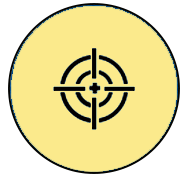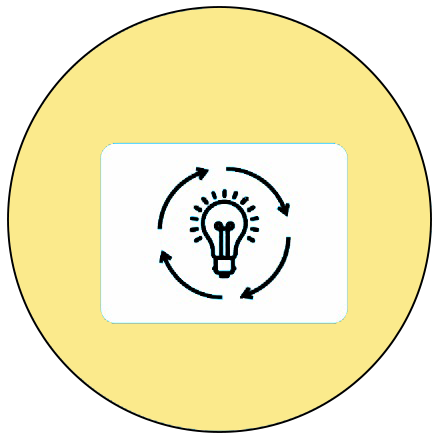
Numbers 100 to 500
Week 1
Learning Outcome
Recognises and reads number names and numerals up to 500 using the place value concept.
 Objective
Objective
Children will be able to form and read numbers from 100 to 500.
 Prerequisites
Prerequisites
- Children can say the numbers up to 99.
- The teacher can have a simple check for understanding at the beginning of the lesson by asking the children to see and read aloud the numbers by showing flashcards.
 Pre-teach Vocabulary
Pre-teach Vocabulary
Children should be familiar with the terms add, plus, equal to, places, after, before.
Introduction: Place Value Using Base 10 Blocks
Materials required:
- Flashcards with numbers
- Cutouts – single block (10)
- Cutouts – 10 blocks (10)
- Cutouts – 100 square blocks (10)
- A ball
- Recorded music
Recap:
- The teacher could begin by reviewing numbers from 1 to 99 with the class. Using a large flashcard, the teacher can ask the children to identify each number.
- Instruct the children to sit in a circle. One child will have a ball. The teacher will play a piece of music, and the children will pass the ball to the child sitting next to him/her. When the teacher stops the music, they have to stop passing the ball, and the one who has the ball will be shown a number flashcard and asked to say aloud the number of the flashcard. Once the child identifies the number, the music will play again to resume passing the ball, and the same procedure will be repeated.
- Encourage the children to pass the ball to the rhythm.
- To reinforce the concept, questions like ‘What number comes after the number _____? What number comes before the number ____?’ could be asked.
Build numbers using Base Ten Blocks (Flashcards)
The new set of numbers from 100 to 500 will be introduced using flashcards.
 Note to the teacher: Use I do, we do, and you do strategy
Note to the teacher: Use I do, we do, and you do strategy
- I Do (Teacher Models)
- Display a flashcard with a number (e.g., 134).
- Show each base 10 block cutout and explain what it represents:
- 100 square = 100; 10 rod = 10; single block = 1.
- Build the number 134.
- Place 1 hundred square, 3 ten rods, and 4 single blocks in their appropriate position.
- Read the number to reinforce place value.
- Repeat with a few more numbers (e.g., 256, 403) to reinforce understanding.
- We Do (Guided Practice)
- Choose a flashcard with a number (e.g., 278).
- Ask 3 children to come forward:
- One picks the correct number of hundred squares.
- One picks the tens rods.
- One picks the single blocks.
- As a class, check if the number is built correctly.
- Discuss it with the class together.
- You Do (Independent/Group Practice)
- Divide the class into small groups.
- Give each group a number flashcard.
- Ask them to build the number using the base 10 cutouts.
- Rotate and check each group’s work. Ask children to explain how they built the number.
Video: Introduction – Place value using base 10 blocks – Coming soon
ISL Video: Introduction – Place value using base 10 blocks – Coming soon
LTM: DIY Flashcards – Coming soon
LTM: Printable Flashcards – Coming soon
LTM: Base 10 blocks cutouts – Coming soon
Activity 1: Build and Match
Objective:
To enable the children to form numbers between 100 and 500 using base 10 block cutouts and match them with corresponding number flashcards, reinforcing their understanding of place value.
Importance of the activity for children:
Helps in developing:
- Numerical skills (Number recognition, sequencing, place value)
- Cognitive skills (Memory, recall, association, visual processing)
- Gross motor skills (Walking, bending)
- Fine motor skills (Picking, placing blocks, hand-eye coordination)
- Social skills (Patience, appreciating others)
- Emotional skills (Builds confidence in numeracy, promotes a sense of achievement that boosts self-esteem, and encourages pride in learning new skills)
Resources required:
- Number flashcards (with numbers 100-500, in both numerals and words)
- Cut-outs of base 10 blocks:
- 100 squares (x10)
- 10 rods (x10)
- 1 block (x10)
- Floor mat or large table space
- Clothespins or sticky notes for labelling (optional)
- Tubs or trays to organize blocks
Setting for the activity:
The activity can be done indoors or outdoors depending on the space available. Ensure there is enough room for the children to spread out the materials and build their numbers comfortably.
Type of activity: G
Individual activity (can also be adapted for partner or small group work for differentiated instruction)
Preparation of activity:
- Print and laminate number flashcards for durability.
- Cut and sort base, 10 block cutouts in labelled trays (hundreds, tens, and ones).
- Prepare a sample model to demonstrate during the introduction.
- Arrange materials on accessible tables or mats for children to pick and use.
Role of the teacher:
- Demonstrator: Show how to build a number using the blocks step-by-step.
- Observer: Watch how children engage with the materials and identify those who need extra help.
- Facilitator: Prompt children with guiding questions like ‘How many tens do you need?’ or ‘What number do you have now?’
Procedure:
- Gather the class and explain the goal of the activity: to build numbers using blocks and match them to number cards.
- Demonstrate how to build a sample number (e.g., 243) using
- 2 hundred squares
- 4 ten rods
- 3 single blocks
- Show how the built number corresponds to the number flashcard.
- Distribute one flashcard to each child.
- Ask children to:
- Identify the number
- Collect the correct blocks from the trays
- Build the number on their mat or desk
- Place the flashcard next to their built number
- Once finished, children can walk around (gallery walk) and check each other’s work.
- Optional: Children can record their number and draw in their math notebook.
Observations:
The teacher watches how the children engage with the materials and how they build the number. The teacher also identifies those who need help and guides them accordingly.
Conclusion:
By the end of the activity, children will be able to accurately represent numbers using base 10 blocks and match them to written numerals. They will have a clearer understanding of how numbers are composed and how each digit represents a value depending on its place.
Video: Build and Match – Coming soon
ISL Video: Build and Match – Coming soon
Activity 2: Mystery Number Detective
Objective:
To strengthen children’s ability to read and interpret numbers represented with base 10 blocks and to reinforce their understanding of place value by identifying ‘mystery numbers’.
Importance of the activity for children:
Helps in developing:
- Numerical skills (Number recognition, place value)
- Cognitive skills (Listening, association, visual processing, attention to details)
- Gross motor skills (Sitting erect, bending while writing)
- Fine motor skills (Picking a pencil, writing, hand-eye coordination)
- Social skills (Patience, appreciating others)
- Emotional skills (Builds confidence in numeracy, promotes a sense of achievement that boosts self-esteem, and encourages pride in learning new skills)
Resources required:
- Pre-made ‘Mystery Number’ cards or slides (showing pictures or drawings of base 10 blocks)
- Physical base 10 blocks (optional, for hands-on learners)
- Math notebooks and pencils
- Number line (optional, for self-checking)
- Optional audio clues for differentiation (e.g., recorded clues: ‘2 hundreds, 3 tens, 4 ones’)
- Projector (if using digital images)
Setting for the activity:
The activity can be conducted indoors, in a whole-group or small-group setting, where all children can view the mystery card and respond from their seats or workstations.
Type of activity:
Individual activity (can be adapted into a partner or whole-class game)
Preparation of activity:
- Create or print several ‘mystery number’ cards showing different combinations of base 10 blocks (without writing the number).
- Prepare audio clues if needed for auditory learners.
- Set up a whiteboard or chart to display and solve examples together.
- Organize base 10 blocks for those who need concrete materials to support their thinking.
Role of the teacher:
- Presenter: Reveal or read out each mystery number card to the class.
- Questioner: Ask guiding questions like, ‘How many hundreds do you see?’ ‘What does that represent?’
Procedure:
- Introduce the activity as a game.
- The teacher says, ‘Today, you are detectives! You have to figure out the secret number based on the clues.’
- Show a mystery card (e.g., a picture of 3 hundreds, 2 tens, and 1 one) or read the clue aloud.
- Children silently think and write the number in their notebook (e.g., 321).
- After the countdown, children hold up their answers or reveal them.
- Discuss as a group:
- ‘What clues helped you?’
- ‘Which place had the highest value?’
- Repeat with 3–5 different mystery numbers, gradually increasing complexity.
- Optional: Let children create their own mystery number cards and challenge a partner or the class.
Observation:
The teacher watches how children engage with the materials and how they build the number. The teacher also identifies those who need help and guides them accordingly.
Conclusion:
Children will be able to interpret base 10 representations and accurately name numbers up to 500. They’ll gain confidence in using place value knowledge and explaining how they determined their answers like real number detectives.
Video: Mystery number detective – Coming soon
ISL Video: Mystery number detective – Coming soon
Assessment
The teacher can give the practice worksheet to children that can be followed by an assessment worksheet.
Practice Worksheet: Write the number formed – Coming soon
Practice Worksheet: Write the number formed (Enlarged) – Coming soon
Assessment Worksheet: Write the number formed – Coming soon
Assessment Worksheet: Write the number formed (Enlarged) – Coming soon
Cross-Curricular Connection:
- Art Class:
- Children can create a number announced in class using clay or other craft materials (e.g., forming digits or beads for an abacus).
- Language Class:
- Teach number songs that include numbers up to 500.
- Provide a number and ask the children to speak or write a few sentences using that number in context (e.g., ‘There were 243 balloons at the party.’).
- Physical Education Class:
- Organise a Number Hunt game where children search for hidden number cards and represent the number using movement, props, or group activities.
Check list for teacher:
| Activity | Yes | No | Sometimes |
| Children can: | |||
| Identify numbers from 100 to 500 | |||
| Read the numbers from 100 to 500 | |||
| Read in sequence the numbers starting from any number from 100 to 500 | |||
| Complete the activities in the given time | |||
| Do the activities independently | |||
| Express verbally and through actions, expressions, or gestures | |||
| Enjoy teamwork, appreciate others, and are willing to learn from others |
Home Activity
Objective:
To choose the number that corresponds to the picture through an online fun activity.
Home activity: Word Wall – Choose the correct number – Coming soon
Adaptations for addressing learner variability: Adaptations and strategies – Coming soon
Teacher Resource Document
| Source and Attribution of images: All images used in the above Assets and Aids are originally created. |
| This digital material has been developed by the Sri Sathya Sai Vidya Vahini Inclusive Education Project, a unit of Sri Sathya Sai Central Trust, Prasanthi Nilayam, as a collaborative offering in the service of our nation. |